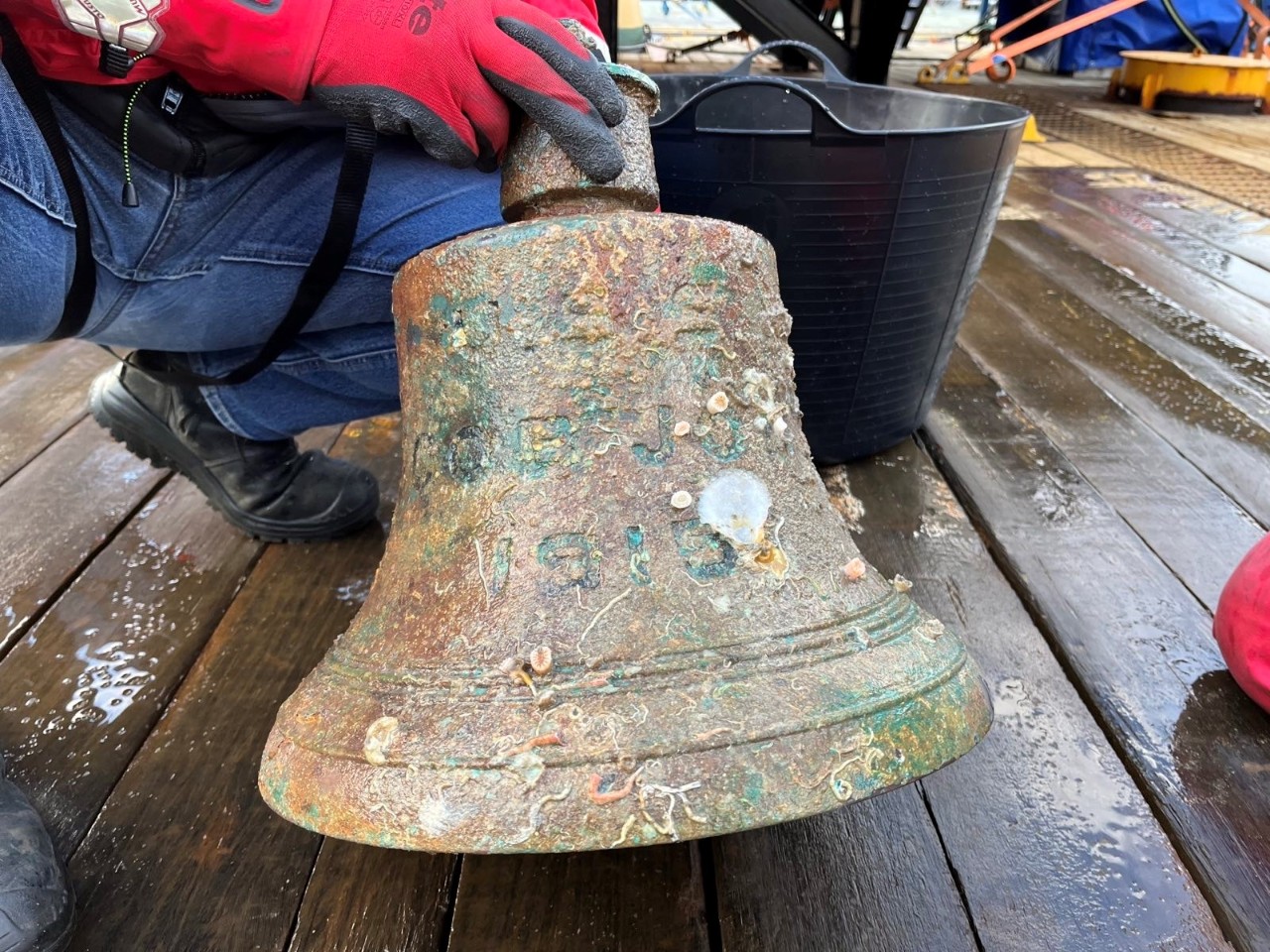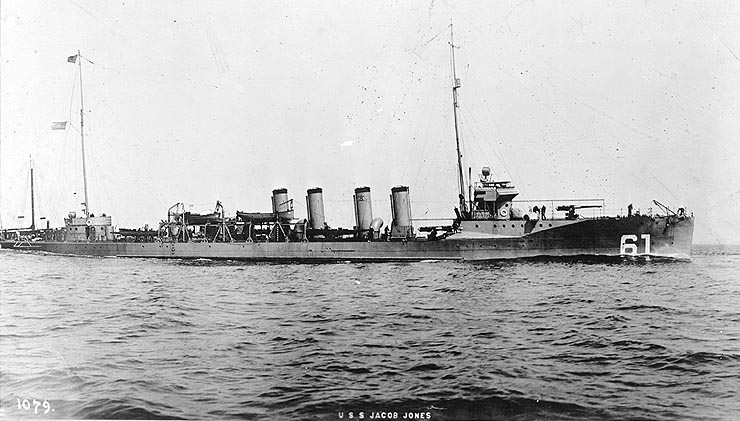
The bell of the USS Jacob Jones (DD-61), the only American destroyer sunk during World War I, has been recovered by a special salvage unit with the United Kingdom’s Ministry of Defense at the request of the U.S. Naval History and Heritage Command.
The command asked for assistance from the ministry’s Salvage and Marine Operations unit “due to the risk of unauthorized and illegal salvaging,” retired Rear Adm. Sam Cox said in a statement. The shipwreck itself was first discovered off the Isles of Scilly, an archipelago off the southwestern coast of England, in August 2022.
The U.K. unit has used a remotely operated vehicle to survey the site for long-term preservation and protection since the wreck’s discovery, NHHC said in a news release.
“The wreck of the ship is a hallowed war grave and is the last resting places for many of the 64 men who were lost in the sinking,” Cox said.
“Jacob Jones, a Tucker-class thousand tonner, was torpedoed on Dec. 6, 1917,” while returning to Queenstown, Ireland, after handing off a convoy near Brest, France, naval historian William Still wrote in his “Crisis at Sea” account of the U.S. Navy in Europe during the war.
Jacob Jones was in the second division of destroyers sent to Europe in May 1917, the month after the United States entered the war. The destroyers were assigned convoy escort duties to protect the Western Approaches to the United Kingdom and France from U-boat attacks that threatened the movement of food, weapons and troops to the allies on the continent.
The Maritime Archaeology Trust credits the destroyer with rescuing 374 crewmen and passengers from torpedoed merchant and passenger ships during its service in European waters.
On the late afternoon of Dec. 6, after leaving the convoy, Jacob Jones was heading for Ireland when the destroyer began target practice.

“The gunfire attracted U-53 (Kapitänleutnant Hans Rose) – the same ship and captain that had visited Newport while Jacob Jones was tied up there one year before. The U-boat stalked the destroyer unseen, closing from 2-3 miles to 1,000 meters, and fired a torpedo from her bow tubes,” according to the official history account from Naval History and Heritage Command.
The torpedo was spotted and the commander, Lt. Cmdr. David Bagley, ordered Jacob Jones to take evasive action but to no avail.
“The torpedo struck Jacob Jones three feet below the waterline in the fuel oil tank between the auxiliary room and the after crew space [on the starboard side]. Many men died in the blast and compartments immediately took on frigid water from the winter sea. On impact, the ship began to settle aft,” sinking in about eight minutes, the official history continues.
While the ship’s fuel didn’t ignite, the depth charges exploded, killing and injuring more men already in the frigid water, Still wrote.
“On board the rafts and in the boats acts of self-sacrifice abounded. BM1c Charles Charlesworth provided his shipmates with some of his clothing in attempts to keep them warm and alive. CPhM Ernest H. Pennington described a few years after the war how a shipmate noticed that the lightly clad Pennington was on the verge of death. The sailor removed his own heavy coat and succeeded in saving his shipmate’s life. Lt. (j.g.) [Stanton] Kalk, despite his weakened state, swam from one raft to another in the icy sea to equalize the weight on the rafts and help fellow sailors until he succumbed to exposure during the night. His shipmates considered him ‘game to the last,” the official history adds.
Kalk was posthumously awarded the Navy Distinguished Service Medal and was buried at sea.
A destroyer named in Kalk’s honor, built at the Fore River yard in Quincy, Mass., was launched in December 1918. USS Kalk (DD-170), a Wickes-class destroyer, was transferred to the U.K. Royal Navy in 1940 as part of the Lend Lease arrangement between Washington and London.
Still describes Rose as “one of the most successful German submarine commanders” in the war. After two American sailors were taken aboard, he also sent an SOS signal that led to the survivors’ rescue after having “been exposed to the frigid water and air for nearly seventeen hours.” Whether Rose sent the signal to rescue the crew still in the water, lure more ships into a trap or drive a wedge between allies, is unclear.
This year the U.K. salvage team, before leaving the site with the bell and video survey, “placed a wreath and American flag on the wreck in tribute to the sailors lost 107 years ago,” the Navy release reads.
Jacob Jones was commissioned in 1916 and constructed at New York Shipbuilding’s facility in Camden, N.J.
For now, the command has placed the bell with Wessex Archaeology in the United Kingdom. A formal handover ceremony will take place later this year. The bell will then go to NHHC’s Underwater Archaeology Branch for conservation treatment.
Plans call for its eventual display at the National Museum of the United States Navy.





